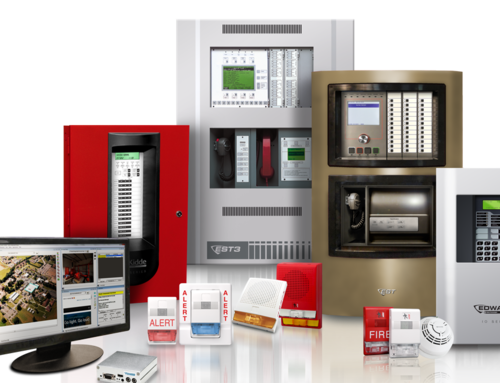
Fire Alarm System
Fire Alarm System is designed to alert us to an emergency so that we can take action to protect ourselves, staff and the general public.
Fire alarm panel
Detectors
At the core of a fire alarm system are the detection devices, from sophisticated intelligent smoke detectors to simple manually operated break glass units, there are a wide array of different types, but we can divide them into groups including.
– Heat detectors
– Smoke detectors
– Carbon Monoxide detectors
– Multi-sensor detectors
– Manual Call Points
.
Types of Fire Alarm Panels
Fire Alarm Systems can be broken down into four main types:
– Conventional
– Addressable
– Intelligent
– Wireless
Conventional Fire Alarm System
In a Conventional Fire Alarm System, physical cabling is used to interconnect several call points and detectors,
the signals from which are wired back to the main control unit.
Call points and detectors are arranged in “Zones” to simplify locating the cause of the alarm, this is important for both the fire brigade and general building management
Each zone is indicated at the Fire Alarm Control Panel either with an indicator lamp, a text display or in some cases both
It makes sense that the more we can divide a building into zones, the more accurate locating the alarm trigger will be.
Addressable Fire Alarm Panel
The detection principle of an Addressable System is the same as a Conventional System except that each detector
is given a set Address (usually by means of a dip-switch) and the Control Panel can then determine exactly which
detector or call point has initiated the alarm.
The detection circuit is wired as a loop and up to 99 devices may be connected to each loop.
It is common for the loop to be fitted with Loop Isolation Modules so that the loop is sectioned in order to ensure
that a short circuit or single fault will only cause the loss of a small part of the system; allowing the rest of the
system to function normally.
please send you Requirement for new installation or AMC QUOTE